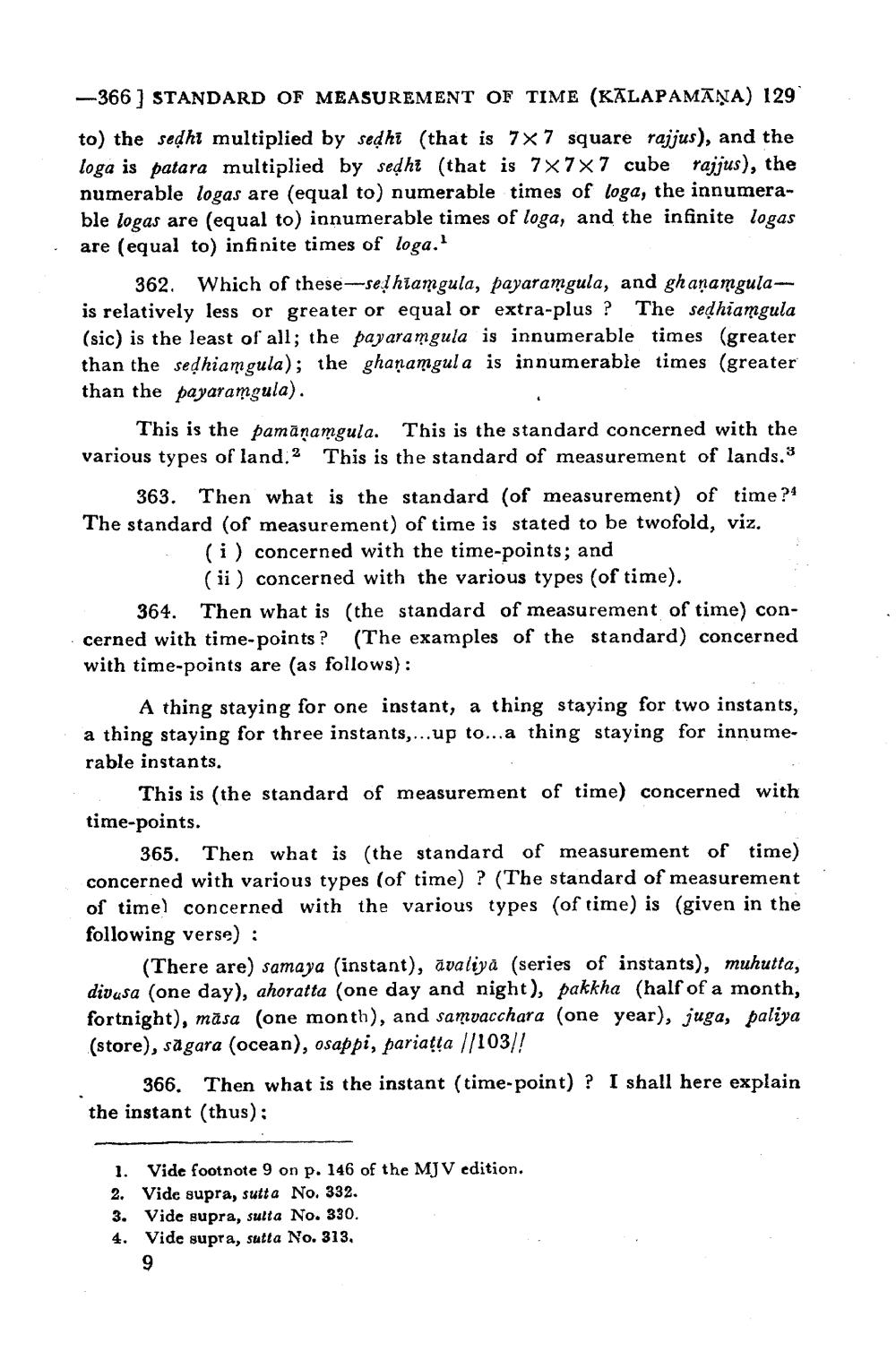________________
-366 ] STANDARD OF MEASUREMENT OF TIME (KĀLAPAMĀŅA) 129 to) the sedhi multiplied by sedhi (that is 7x7 square rajjus), and the loga is patara multiplied by sedhi (that is 7x7x7 cube rajjus), the numerable logas are (equal to) numerable times of loga, the innumerable logas are equal to) innumerable times of loga, and the infinite logas are (equal to) infinite times of loga.
362. Which of these---selhiamgula, payaramgula, and ghaṇamgulais relatively less or greater or equal or extra-plus ? The sedhiamgula (sic) is the least of all; the payaramgula is innumerable times (greater than the sedhiamgula); the gharamgula is innumerable times (greater than the payaramgula).
This is the pamānamgula. This is the standard concerned with the various types of land. This is the standard of measurement of lands. 3
363. Then what is the standard (of measurement) of time ?4 The standard (of measurement) of time is stated to be twofold, viz.
(i) concerned with the time-points; and
(ii) concerned with the various types (of time). 364. Then what is the standard of measurement of time) concerned with time-points ? (The examples of the standard) concerned with time-points are (as follows) :
A thing staying for one instant, a thing staying for two instants, a thing staying for three instants,...up to...a thing staying for innumerable instants.
This is (the standard of measurement of time) concerned with time-points.
365. Then what is (the standard of measurement of time) concerned with various types (of time) ? (The standard of measurement of timel concerned with the various types of time) is (given in the following verse)
(There are) samaya (instant), avaliya (series of instants), muhutta, divusa (one day), ahoratta (one day and night), pakkha (half of a month, fortnight), māsa (one month), and samvacchara (one year), juga, paliya (store), sågara (ocean), osappi, pariatła //103/!
366. Then what is the instant (time-point) ? I shall here explain the instant (thus);
1. Vide footnote 9 on p. 146 of the MJ V edition. 2. Vide supra, sutta No. 332. 3. Vide supra, sulta No. 330. 4. Vide supra, sutta No. 313.




